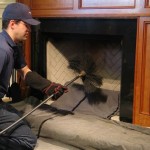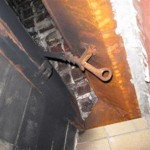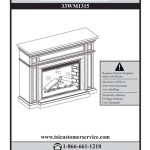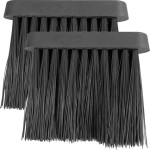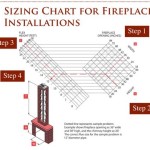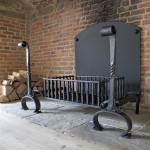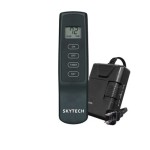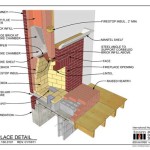```html
Freestanding Fireplace Screens: A Comprehensive Guide
Freestanding fireplace screens are a crucial safety element in any home with a functioning fireplace. They serve to protect the occupants and the surrounding furnishings from sparks, embers, and rolling logs that can escape the firebox. Beyond their functional purpose, these screens also contribute significantly to the aesthetic appeal of the hearth area, often serving as a decorative focal point even when the fireplace is not in use. A wide variety of styles, materials, and sizes are available, allowing homeowners to select a screen that complements their existing décor while providing necessary protection.
This article provides a thorough examination of freestanding fireplace screens, covering their various aspects, from understanding their essential functions to exploring the different types available, the materials they are constructed from, and the considerations when selecting the appropriate screen for specific needs. Furthermore, it will delve into the importance of proper maintenance to ensure longevity and optimal performance.
Understanding the Primary Functions
The foremost function of a freestanding fireplace screen is safety. The open nature of a fireplace, while visually appealing, poses a significant risk of embers and sparks escaping the firebox. These stray embers can easily ignite nearby carpets, furniture, or clothing, leading to property damage and potentially causing serious injuries. A well-placed and properly constructed fireplace screen acts as a barrier, containing these errant sparks and preventing them from spreading beyond the immediate vicinity of the hearth.
Another crucial function is preventing logs from rolling out of the fireplace. As wood burns, it can shift and settle, potentially causing logs to unexpectedly roll toward the front of the hearth. This can be particularly dangerous, especially if children or pets are present. A sturdy fireplace screen provides a physical barrier, preventing logs from escaping and minimizing the risk of accidents. The screen also protects against burns from accidental contact with the fire itself. An excited pet or a small child might not fully understand the danger of the open flame, and a screen can prevent them from getting too close and potentially suffering burns.
Beyond safety, a fireplace screen serves as a decorative element. It can enhance the visual appeal of the fireplace area, adding a touch of style and sophistication. The screens come in various designs, from simple and understated to ornate and elaborate, offering homeowners the opportunity to personalize their hearth area and complement their existing décor. A well-chosen screen can seamlessly integrate with the overall aesthetic of the room, adding a sense of warmth and character.
Exploring Different Types of Freestanding Fireplace Screens
The market offers a diverse array of freestanding fireplace screens, each with its own unique features and benefits. Understanding these different types is essential to making an informed decision and selecting the screen that best suits individual needs and preferences. Some of the common screen types include single-panel, multi-panel, arched, and flat screens.
Single-panel screens are the simplest and most basic type. They consist of a single, flat or slightly curved panel of mesh or metal that sits directly in front of the fireplace opening. Single-panel screens are typically more affordable and easier to move and store compared to multi-panel options. They are best suited for smaller fireplaces or for homeowners who prefer a minimalist aesthetic.
Multi-panel screens offer greater flexibility and coverage. They consist of two or more hinged panels that can be adjusted to fit different fireplace openings. This adjustability makes them suitable for larger or irregularly shaped fireplaces. The hinged panels also allow for easy access to the firebox for adding wood or tending to the fire. These screens often have a center panel that is larger with side panels that allow you to adjust the width to fit the fireplace opening.
Arched screens feature a curved top edge, adding a touch of elegance and sophistication to the hearth. The arched design can complement traditional or formal décor styles. These screens often have decorative details, such as intricate metalwork or embellishments, further enhancing their aesthetic appeal. The arch can add a sense of height to the fireplace.
Flat screens provide a clean and contemporary look. Their straight lines and minimalist design make them a popular choice for modern homes. Flat screens are often made of sleek materials, such as brushed nickel or stainless steel, further emphasizing their contemporary appeal. They are unobtrusive and blend well in a modern setting.
In addition to these basic types, some screens include features such as toolsets or doors. Toolsets are often integrated into the screen's design, providing convenient storage for essential fireplace tools, such as a poker, shovel, and tongs. Screens with doors allow for easy access to the firebox without having to move the entire screen. Doors usually feature a latch or some type of locking mechanism to ensure they remain closed when not being used.
Materials and Construction Considerations
The materials used in the construction of a freestanding fireplace screen significantly impact its durability, safety, and aesthetic appeal. Commonly used materials include steel, iron, brass, and stainless steel. Each material offers distinct advantages and disadvantages, which should be carefully considered when making a purchase.
Steel is a popular choice due to its strength, durability, and affordability. Steel screens are typically coated with a heat-resistant finish to prevent rusting and corrosion. Steel offers good protection against sparks and embers and can withstand high temperatures. It is often used for utilitarian screens that prioritize safety and functionality.
Iron is another strong and durable material that offers a classic and timeless look. Iron screens are often heavier than steel screens, providing added stability. They can be crafted into intricate designs and are often finished with a powder coating to enhance their resistance to rust and corrosion. Cast iron can provide a very traditional aesthetic.
Brass adds an elegant and sophisticated touch to the hearth. Brass screens are often more expensive than steel or iron screens but offer a luxurious look. Brass is naturally resistant to rust and corrosion, making it a durable choice. However, brass can tarnish over time and may require periodic polishing to maintain its shine.
Stainless steel is a modern and durable material that is highly resistant to rust and corrosion. Stainless steel screens are often sleek and minimalist in design, making them a popular choice for contemporary homes. Stainless steel is also easy to clean and maintain.
The construction of the screen is also important. Look for screens with sturdy frames and well-secured mesh or metal panels. The hinges on multi-panel screens should be strong and durable, allowing for smooth and reliable operation. The base of the screen should be wide and stable to prevent it from tipping over.
The mesh used in the screen should be made of a fine gauge material to effectively block sparks and embers. The mesh should also be securely attached to the frame to prevent it from coming loose or tearing. The method of attachment is a key point to examine. Look for tightly woven mesh that is securely fastened to the frame.
Furthermore, the finish of the screen should be heat-resistant and durable. Powder coating is a common finish that provides excellent protection against rust and corrosion. The finish should also be aesthetically pleasing and complement the overall design of the screen.
Selecting the Right Screen for Your Needs
Choosing the right freestanding fireplace screen involves several considerations, including the size and shape of the fireplace opening, the style of the décor, and the specific safety needs of the household. Taking the time to carefully assess these factors will help ensure that the selected screen is both functional and aesthetically pleasing.
First, measure the width and height of the fireplace opening to determine the appropriate size of the screen. The screen should be wide enough to fully cover the opening, preventing sparks and embers from escaping. It should be tall enough to protect against logs rolling out of the firebox. The width of the fireplace will determine the size you need to ensure full coverage, while the height will keep logs in place.
Consider the style of the décor when choosing a screen. Select a screen that complements the existing furniture and accessories in the room. For traditional homes, an arched screen with intricate metalwork may be a suitable choice. For modern homes, a flat screen made of stainless steel may be a better fit. The material and design will affect the overall visual impact. A seamless design will tie a room together.
Evaluate the specific safety needs of the household. If there are young children or pets in the home, prioritize safety features, such as a sturdy frame, fine-gauge mesh, and a stable base. Consider screens with doors or toolsets for added convenience. The presence of children and pets necessitates a screen with features that prevent accidents. The safety feature should be a primary concern when selecting a screen.
Finally, consider the budget. Freestanding fireplace screens range in price from relatively inexpensive to quite expensive. Determine a budget before starting the shopping process and stick to it. Compare prices from different retailers to find the best deal. Balancing cost and quality is essential to making a wise purchase.
Proper installation is critical to ensuring the screen's effectiveness. The screen should be placed close enough to the fireplace to prevent sparks from escaping, but not so close that it overheats. Ensure the screen is stable and secure, preventing it from tipping over. Check that the screen is placed the correct distance from the fire, to ensure embers do not escape, but it is not close enough for it to negatively impact the integrity of the screen.
Carefully review the manufacturer's instructions for proper installation and usage guidelines. Regularly inspect the screen for any signs of damage, such as tears in the mesh or loose hinges. Repair or replace the screen as needed to maintain its safety and functionality.
```
Barton Black Freestanding Flat Steel 2 Panel Fireplace Screen For Indoor Living Room 96315 H1 The Home Depot

12 Best Freestanding Fireplace Screens 2024

Freestanding Fireplace Screens Ironhaus

Sei Furniture Jandra Decorative Fireplace Screen 39 X 32 Freestanding Accessories Com

Barton 47 In W X 30 H 3 Panel Freestanding Fireplace Screen Tempered Glass With Handle 95060 The Home Depot

12 Best Freestanding Fireplace Screens 2024

Barton 44 In X 33 Free Standing Fireplace Screen 2 Panel Indoor Living Room Flat Gold 96322 The Home Depot

12 Best Freestanding Fireplace Screens 2024

Plasma Fire Screen Optional Accessory Mad Ecosmart

Freestanding Fireplace Glass Screen 44 Wide X 32 High

